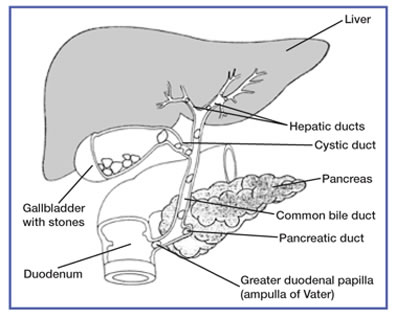For All The Latest Medical News, Health News, Research News, COVID-19 News, Dengue News, Glaucoma News, Diabetes News, Herb News, Phytochemical News, Cardiology News, Epigenetic News, Cancer News, Doctor News, Hospital News
Gallstones are small stones that form within the gallbladder and are usually made up of cholesterol.
In the majority of people with gallstones, the stones do not cause symptoms or require treatment. However, treatment may be necessary if a gallstone becomes trapped in the gallbladder and starts to cause symptoms and complications. When this happens, a patient is said to have gall bladder disease.

If a trapped gallstone causes pain, the patient is said to have biliary colic and if the gallbladder starts to become inflamed, the term cholecystitis is used. Cholecystitis can cause pain, fever (temp above 38˚C) and jaundice.
Occasionally, the gallstone moves into the pancreas where it causes irritation and inflammation. This is referred to as acute pancreatitis and causes abdominal pain that gradually worsens over time.
The gallbladder is a pouch-shaped structure that lies beneath the liver. It mainly stores and concentrates bile that is produced by the liver to help digest fats. The bile from the liver moves into the gallbladder via a series of channels known of as bile ducts. After concentrating the bile to increase its ability to digest fats, the gallbladder releases bile into the digestive system, as required.
Gallstones are very common and estimates suggest that over 10% of adults have them, although very few people develop symptoms. The stones are thought to develop due to a chemical imbalance in how bile is made up.
Usually, the cholesterol content is too high and the excess cholesterol leads to stones developing. Some examples of factors that are known to increase the likelihood of gallstones developing include overweight or obesity, female gender, and age 40 years or older.
Gallstones are usually diagnosed based on ultrasound examination of the abdomen and if the gallbladder does need to be removed, keyhole surgery may be recommended and is referred to as laparoscopic cholecystectomy.